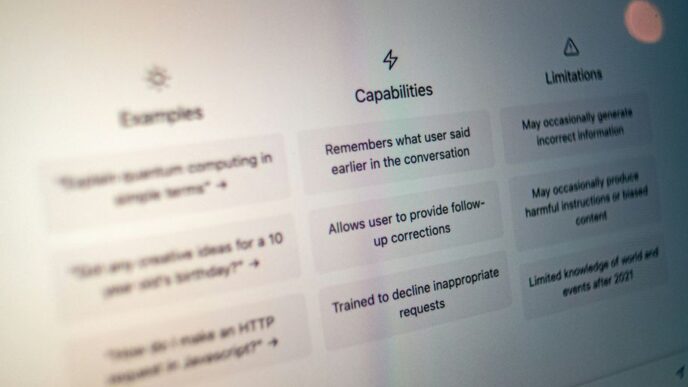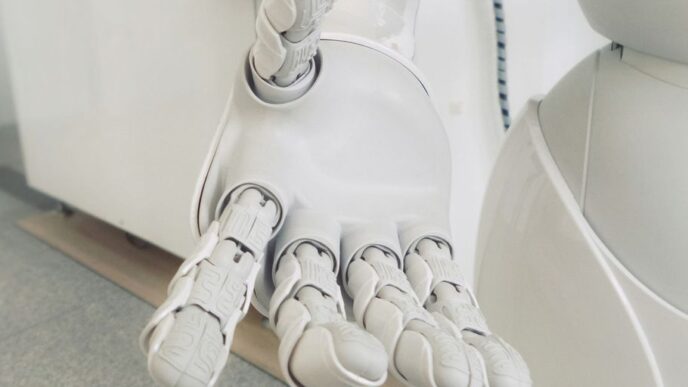Technology has a way of transforming how we do business. From the Industrial Age of early steam-powered boilers to modern internet-based e-commerce stores, there are countless examples of technology having a disruptive and transformative effect on business. And it seems we are on the cusp of another massive change, thanks to growing advancements and development in artificial intelligence. Of course, AI itself is surrounded by a lot of media hype and buzz. On one hand, it can offer basic customer support as in chatbots on the Charter Spectrum Customer Support website. But is it really powerful enough to have an impact on the way we do business? That is exactly what this blog explores.
What Exactly Is Meant By AI?
Artificial intelligence or AI has seen such intense media attention over the past decade that it has become almost a household name. In fact, if you have a smart speaker like Amazon Echo or Google Home Assistant, you likely interact with AI every day. But despite this, the chances are good that even you don’t fully understand it. In broad terms, AI refers to a computer system that can perform activities similar to humans. This refers to AI software designed to learn, plan, solve problems, and even make predictions based on data. AI itself has many applications in the business world, some of which are already commonplace. Here are a few ways it impacts businesses:
- Using Machine Learning In Business
- Use Cases of Deep Learning In Business
- Synergizing Human and Machine Workflows
Let’s examine these in more detail below.
Using Machine Learning In Business
The use of machine learning or ML is actually fairly widespread in the business world. Machine learning software is designed to process large volumes of data very quickly. Over time, the algorithm appears to “learn” how to process and analyze the data better. The more data the ML algorithm works on, the more it learns, and the more it improves its modeling. ML software is very useful in that it can quickly process a large amount of data and turn it into a context easily digestible by humans.
Machine learning has several applications in terms of business, especially where there is a large number of devices and machinery generating and sharing data over a network. Take a modern manufacturing plant, for example. The different machines and devices in the plant likely generate data that relates to their productivity, operational efficiency, and any possible faults. In a conventional setting, your repair and maintenance crews will be reactive i.e., they only spring into action when a fault develops in one of the machines or devices. But in an ML-supported environment, repair crews can act preventively as well. ML algorithms can constantly process data from the plant, predicting faults before they happen and alerting technicians to take preventive action. This doesn’t just help businesses prevent costly faults from developing, but also ensures that downtime is minimal while productivity remains high.
Use Cases of Deep Learning In Business
Of course, machine learning in itself is a fairly broad term that covers several types of artificial intelligence. One of these is deep learning, which focuses on creating neural networks that allow an algorithm to reason and arrive at conclusions based on non-linear “thinking”. This is a very sophisticated algorithm and some of the more advanced forms are often used in exercises like fraud detection or risk analysis.
A deep learning AI is able to consider and analyze a range of factors simultaneously. This is exactly the type of technology that makes things like Tesla’s self-driving cars possible. The deep learning software in these cars accounts for several factors through a number of sensors, including speed, road conditions, other objects, their distance from the vehicle, etc. It constantly works on these factors to deliver a real-time and safe automated driving experience. Older models of artificial intelligence typically reach their limit after absorbing a certain volume of data. However, deep learning models continue to evolve and improve as you feed them more data. They can potentially become a legacy system that just doesn’t go obsolete.
Synergizing Human and Machine Workflows
People are often wary of the use of artificial intelligence in business. Many believe that AI will eventually muscle out human workers. From a business perspective, it is cheaper to make a one-time expenditure on software that continues to improve than to hire a long-term employee. However, AI is not yet advanced enough to become completely autonomous on its own. Working together, AI and human workers can accomplish far more than either could alone. AI systems will still need human operators to direct data inflows and outflows. Humans will still be the ones analyzing the processed data and basing business decisions on it. In many ways, the synergy between AI and humans in the workplace can improve efficiency, speed up slower business processes, and even predict and prevent problems before they arise.
Conclusion
AI is not the future. It is the present. However, it will still take some time before the technology becomes a generally accepted part of the average workplace. Remember that Spectrum cable company took a while to penetrate the market before becoming one of the most popular internet services in the country. In the same way, as AI grows out of its infancy and more use cases emerge, businesses will begin to see the value in using it. We could very well see AI becoming the dominant software model in virtually every type of business. However, how this progresses is something only time can tell. Let’s see how it pans out in the coming years.










